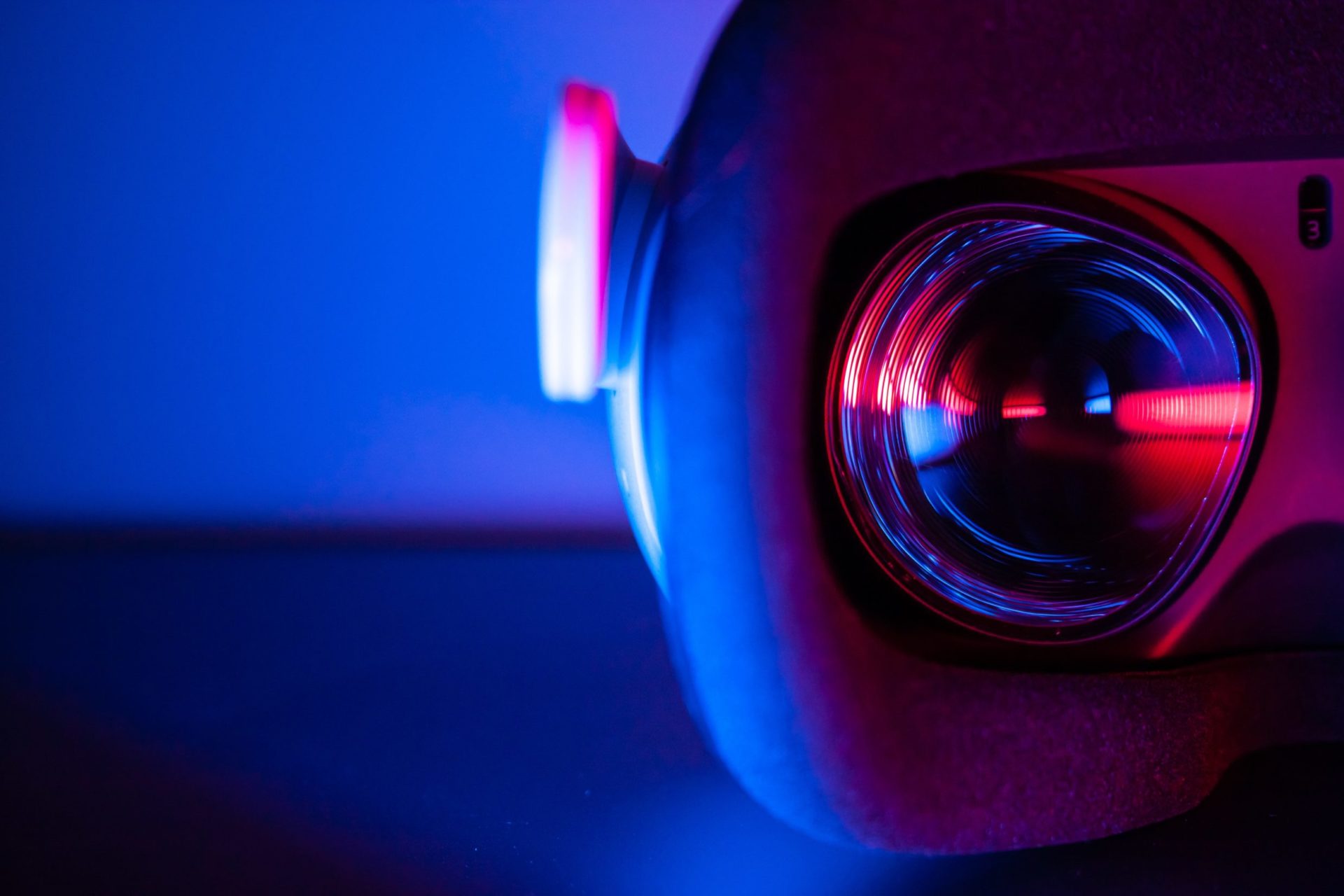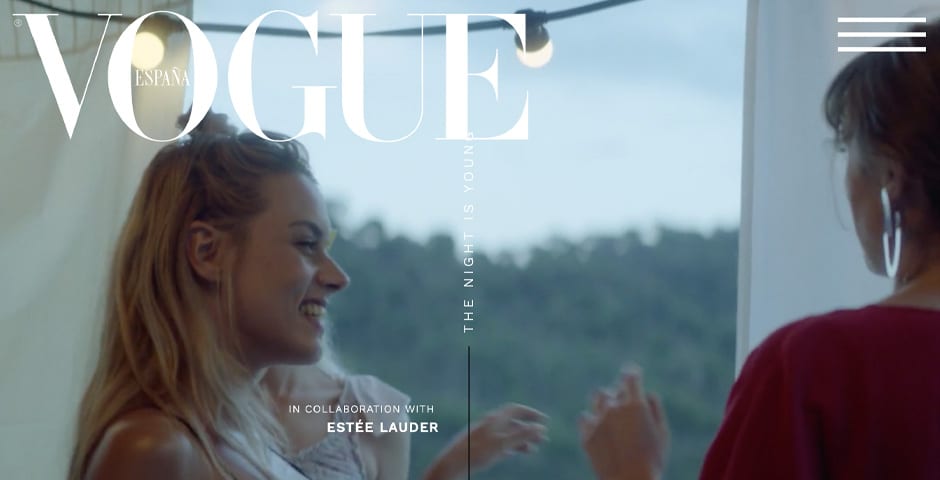Watch
Webby-Winning Video "Dreams of Dalí"
The “Dreams of Dalí” exhibit is a key example of “Internet or Die” for us, especially since virtual reality is increasingly being used in new ways. What led to the decision internally to conceive of this as a VR project?
Roger Baran: In June of 2014, we first put our hands on a virtual-reality device, and we knew we had to do something with it. The possibilities were just endless, and we’re always looking for ways to incorporate new technologies and learn with them. It was an early version of Oculus Rift, and the agency’s BETA group (a group of creative technologists) was testing it, so the technology wasn’t there yet. But since the Dalí Museum is our client, we instantly wanted to go into one of his paintings—and into his mind. There was no better artist out there who would fit the idea better. We played with this idea for months before approaching the museum. Then they briefed us on their upcoming exhibition, Disney and Dalí: Architects of the Imagination, and that was our opportunity.
Sam Luchini: We knew we could make something amazing with Dalí and VR. It made sense because Dalí himself was always trying new technologies and new techniques, and it would be something he definitely would have played with. And then when we researched the museum’s permanent collection and found the 1935 painting, we instantly knew we had found our painting. We thought, how cool would it be to be there and see the real size of those magnificent towers? What was inside or behind the towers? How would it feel to be there and see it like Dalí himself had seen it in his mind? And what if we could hear the desert and maybe even the artist’s thoughts? Because for us, that was a place he had to imagine before painting—and we wanted people to see his painting like he saw it through his eyes or get as close to it as possible. It took us almost a year and a half to bring the idea to life, but it was a fantastic experience and worth every day we spent on it.
VR used to be the stuff of science fiction, but it has rapidly become both more popular and widely available. What change over the past five years has been most significant for your creative work in VR?
S: First the technology has evolved tremendously. The first VR devices had poor image quality, and the devices themselves were too expensive. Computers didn’t have enough processing power to render images in real time, and the whole experience was really clunky. It was like a beta version of what VR would become. In the past five years—and that’s an eternity in “Internet years”—cost has come down, and initiatives like Google Cardboard and Samsung Gear VR have helped make virtual reality a … reality—pun intended. Facebook has jumped in too by buying Oculus Rift and, more recently, by launching its own Facebook VR chats and a VR avatar.
R: VR experiences need to be attached to a strong idea or a strong narrative. And in that sense, storytelling from a first-person point of view has gained traction and acceptance. There are now dozens of games out there, GoPro cameras, and even a feature film entirely told from that point of view. We as a society are falling more and more in love with technology and innovation. Everybody is still figuring out where to go with it, but as technology evolves, computer processing increases, costs decrease, and developers create more applications for it, VR will come of age and deeply impact the way we consume content. But there’s a long way to go.
“Dreams of Dalí” was honored with a Webby People’s Voice Award last year. Awesome! Why do you think it was so well received and well loved by the public?
R: Last year was the year VR became mainstream. But just as with any new technology, most VR executions were underwhelming, and a lot of them used VR just for the sake of doing so, like a ship everyone wants to jump on without knowing why. VR is not supposed to be just a 360-degree video, so you can look around, like most brands were doing. It should really transport us and take us into new worlds and new realities. It should make us feel something, and it changes the way we tell stories. And that’s why we think Dreams of Dalí was so successful: It gave the technology a cause—a real and honorable reason to exist. It took us—and art lovers from around the world—on a journey that had been impossible just a few years ago.
S: It not only revealed a new way to look at art, allowing people to “dive” into a painting and explore new vantage points, but also it gave people new insights into the mind of one of the greatest artists we’ve ever had. More than that, Dreams of Dalí actually took people into the painter’s mind and allowed them see what he saw and what that very painting looked like before it was even painted. Imagine the possibilities it opens to museums—in theory we can now explore all existing paintings. Imagine the possibilities for new artists. If painters try to convey emotions and thoughts through their paintings, then Dreams of Dalí—and VR applied to art—potentializes that, allowing us to see and feel a painting just the way an artist did.
The Internet changes rapidly, so it’s essential to keep innovating to stay relevant (thus, “Internet Or Die”—be original, or be ignored). What does that look like in practice for you? What does it mean “to Internet” in your work at Goodby Silverstein?
S: For us, to “Internet” is natural, and it comes through in every aspect of our work. We believe that if an idea doesn’t make it onto the web, if it’s not talked about, shared on Facebook, discussed on Twitter and Instagram, it’s like it never happened. Every time we launch a campaign, we monitor the Internet to “feel” how successful it is. It should live on the Internet, not on TV, because that’s where things happen today.
R: For us, to “Internet” is to ask ourselves if that idea is something that we’d share or talk about with friends and to make sure we’re looking for new ways to use the technology and the social media that’s available. For us, to “Internet” is to make sure that every idea is social, is innovative, touches culture in a relevant way, is based on a true insight, and utilizes the available technology or social media in a new and unexpected way.
“ ...it’s not about just transporting people to a different place but about making them feel something, about making them live an experience they couldn’t otherwise live.”
Has there been an important lesson learned or takeaway about your experience in VR thus far that you would pass on to others looking to explore the medium?
R: The entire experience was built in-house at Goodby Silverstein & Partners, so there was a ton of lessons learned. The biggest lesson was really about the possibilities that VR opens and that it’s not about just transporting people to a different place but about making them feel something, about making them live an experience they couldn’t otherwise live.
S: And there was a lot of technical learning too. That you have to be very careful so you don’t make people sick, especially in a museum environment, where you get people from all walks of life and of different ages. That sound design plays a big part of it. That you need a lot of processing power to make a seamless experience. That you need to create something that is so intuitive that anyone can use it. That the technology has to evolve a lot. And that craft is very, very important. Especially when you’re talking about bringing Dalí’s imagination to life.
As leaders in your field, what makes a digital project stand out to you? Can you name a recent digital work or campaign that really caught your attention?
R: First we are always looking for true, undeniable insight. Something that is relevant and will resonate deeply with the target. Then we ask ourselves how can we innovate and do it in a way that is genuine to the product and that hasn’t been done, be it a new technique, a new technology or a new way to use an existing social tool. But there are a lot of ways a digital project stands out. It could be because it uses technology in a whole new way, it could be the craft involved or a whole new interface. But one thing that they all have in common is the shared value and how much it will be enjoyed and discussed by the Internet, how much it can impact culture around the target.
S: A recent example of great digital project—and this one was purely digital—was the work for Verizon inside Minecraft. It put in contact the real and virtual worlds in a way that hadn’t been thought possible before, and it clearly communicated what Verizon was all about. It seems like a small idea, but it’s so unexpected and simple, and that’s what makes it so brilliant. Justino, the campaign created for the Spanish lottery, was also incredibly insightful. The craft was brilliant, and it brought the main character, Justino, to life on social media, something that hadn’t been done on that level yet. And, of course, “The Next Rembrandt,” where a bank showed its prowess in using data by creating a new Rembrandt painting after analyzing all the other paintings created by the artist. It had a big insight; it was relevant to the target; it used technology in a whole new way; and it touched culture by creating the discussion about what art is and whether we can use technology to create art.
What emerging digital trend are you most excited about right now, and how do you see it changing the future of your business and the Internet as a whole?
S: The business is moving fast toward technology-based ideas and branded entertainment. Yes, true insights and good storytelling are going to survive and continue to be king. Especially because today kids don’t even understand the concept of unrequested content, meaning advertising. They don’t watch TV the way we came to know it, just the content they want, on their mobile devices.
R: For us this is actually very exciting. Creatives and agencies will have to continue to find ways to impact lives and brands and broadcast big, encompassing ideas by creating content and ideas people want to watch and buy into. Just pushing an advertising idea won’t be enough. And more and more we’re moving toward story doing rather than storytelling. Today the Internet is not a differential anymore and should be part of every idea. And that’s something we should all be very thrilled about.
A big thanks to Roger Baran and Sam Luchini, Creative Directors at Goodby Silverstein & Partners, for sharing their thoughts and process in creating and developing “Dreams of Dalí.” If you haven’t already, head on over to dreamsofdali.net and check out the full VR experience.
Keep an eye out for more interviews with the rest of our Internet Or Die partners for the 21st Annual Webby Awards!










